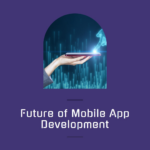Introduction:
In an era where consumers are inundated with advertising messages, brands are constantly seeking innovative ways to capture and retain their audience’s attention. Gamification has emerged as a powerful strategy for marketers, leveraging the principles of game design to engage and incentivize consumers, drive participation, and achieve marketing objectives. In this guide, we’ll explore the role of gamification in marketing campaigns and how it can be used to create immersive and memorable experiences that resonate with audiences and deliver tangible results.

1. Enhancing Engagement and Interactivity:
Gamification adds an element of fun and interactivity to marketing campaigns, enticing consumers to actively participate and engage with brands. By incorporating game mechanics such as points, badges, leaderboards, challenges, and rewards into marketing initiatives, brands can create compelling experiences that captivate their audience’s attention and encourage sustained interaction. Increased engagement leads to higher brand recall, prolonged exposure to marketing messages, and ultimately, greater brand affinity and loyalty among consumers.
2. Driving Desired Behaviors and Actions:
Gamification is a powerful tool for influencing consumer behavior and driving desired actions. By setting clear goals, defining challenges, and offering incentives, brands can motivate consumers to take specific actions, such as making a purchase, sharing content, signing up for a newsletter, or completing a survey. Gamified campaigns tap into consumers’ intrinsic motivation, encouraging them to participate voluntarily and rewarding them for their efforts, thus increasing the likelihood of desired behaviors and conversions.
3. Building Brand Awareness and Recall:
Gamification can significantly enhance brand awareness and recall by immersing consumers in memorable and interactive experiences. Branded games, quizzes, contests, or challenges allow consumers to actively engage with the brand’s messaging and values in a playful and entertaining context. As consumers interact with gamified content, they form positive associations with the brand, leading to increased brand recognition and recall when making purchasing decisions or recommending products and services to others.
4. Fostering Social Sharing and Virality:
Gamification encourages social sharing and virality by tapping into consumers’ natural inclination to compete, collaborate, and share experiences with others. Multiplayer games, challenges, or contests that allow users to compete against friends or share their achievements on social media platforms can quickly gain momentum and reach a wider audience through word-of-mouth and social sharing. Viral gamified campaigns amplify brand visibility, generate buzz, and extend the reach of marketing messages far beyond the initial target audience.
5. Generating Valuable Data and Insights:
Gamification provides brands with valuable data and insights into consumer behavior, preferences, and motivations. By tracking user interactions, engagement metrics, and performance analytics within gamified campaigns, brands can gain a deeper understanding of their audience’s interests, pain points, and purchase intent. This data can inform future marketing strategies, product development initiatives, and personalized messaging, enabling brands to optimize their efforts and deliver more relevant and impactful experiences to their audience.
6. Cultivating Brand Loyalty and Advocacy:
Gamification fosters brand loyalty and advocacy by creating positive and memorable experiences that resonate with consumers on an emotional level. Brands that incorporate gamification into their marketing campaigns demonstrate their commitment to engaging with their audience in meaningful and enjoyable ways. By rewarding loyal customers, providing exclusive perks, and fostering a sense of community and belonging, brands can cultivate long-term relationships with their audience and turn them into loyal advocates who actively promote and endorse the brand to others.
Conclusion:
Gamification has revolutionized marketing campaigns by transforming passive audiences into active participants, creating immersive experiences that captivate attention, drive engagement, and deliver tangible results for brands. By enhancing engagement and interactivity, driving desired behaviors and actions, building brand awareness and recall, fostering social sharing and virality, generating valuable data and insights, and cultivating brand loyalty and advocacy, gamification offers limitless opportunities for brands to connect with their audience in meaningful and memorable ways.
As you incorporate gamification into your marketing campaigns, remember to focus on creating experiences that are relevant, entertaining, and rewarding for your audience. By leveraging the principles of game design to engage and incentivize consumers, you can create immersive and unforgettable experiences that leave a lasting impression and drive measurable impact for your brand.



